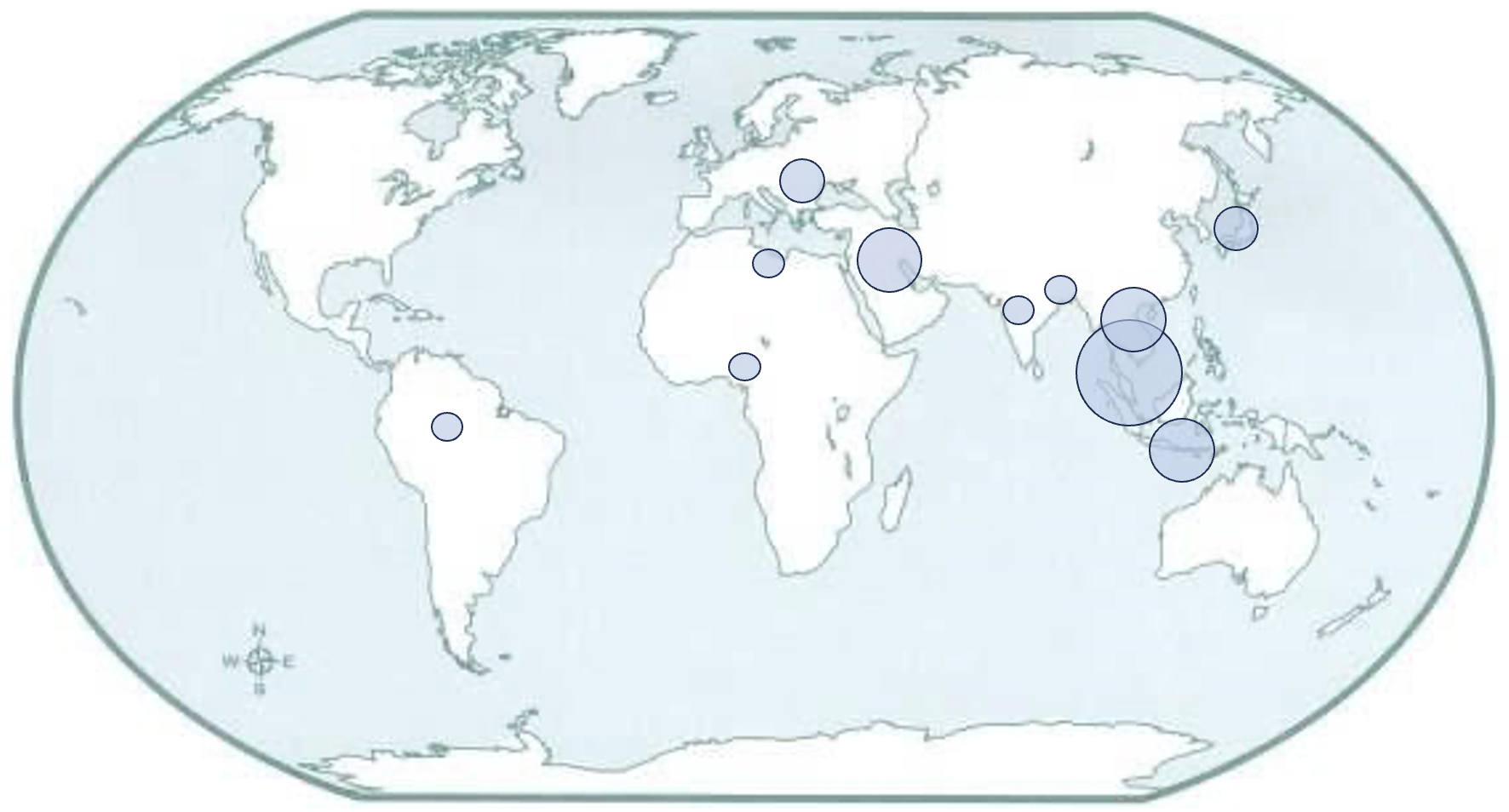Preparation and Characterization of Hydroxyapatite Based Composite Material via Cold Sintering Process
DOI:
https://doi.org/10.37934/armne.21.1.127136Keywords:
Hydroxyapatite, polyvinyl alcohol, cold sintering, biomaterial, compressive strengthAbstract
This study focuses on the synthesis of hydroxyapatite (HA) from bovine bones through calcination and subsequent combination with Polyvinyl Alcohol (PVA) using the Cold Sintering Process (CSP). The CSP, operating at lower temperatures than conventional methods, aims to preserve the bioactivity and biocompatibility of HA, crucial for biomedical applications. The research investigates the influence of HA composition, sintering temperature, and PVA content on the porosity and compressive strength of the HA-PVA composite. The Hydroxyapatite powder, obtained from calcinated bovine bones, exhibits irregular shapes and sizes with a maximum grain size of 10µm, confirmed by SEM analysis. XRD analysis validates the successful production of Hydroxyapatite, showcasing characteristic peaks. The HA/PVA composite's XRD pattern indicates the dominance of HA, with PVA present as well. The study produces 27 specimens through the CSP, varying HA composition and sintering temperature. Porosity increases with higher HA content and sintering temperature, attributed to the role of PVA in binding HA particles. Compressive strength rises with increased HA content, emphasizing HA's role in enhancing mechanical strength. The presence of porosity is mitigated by a strong bond between HA and PVA, contributing to structural integrity. This research provides insights into tailoring HA-PVA materials for biomedical applications, considering controlled porosity and mechanical strength. The CSP, with its unique advantages, emerges as a promising method for developing customized materials to meet diverse biomedical needs.









